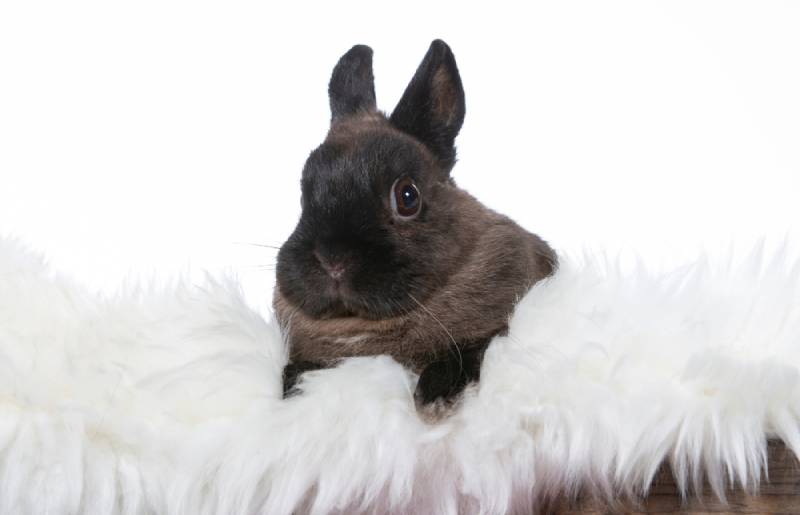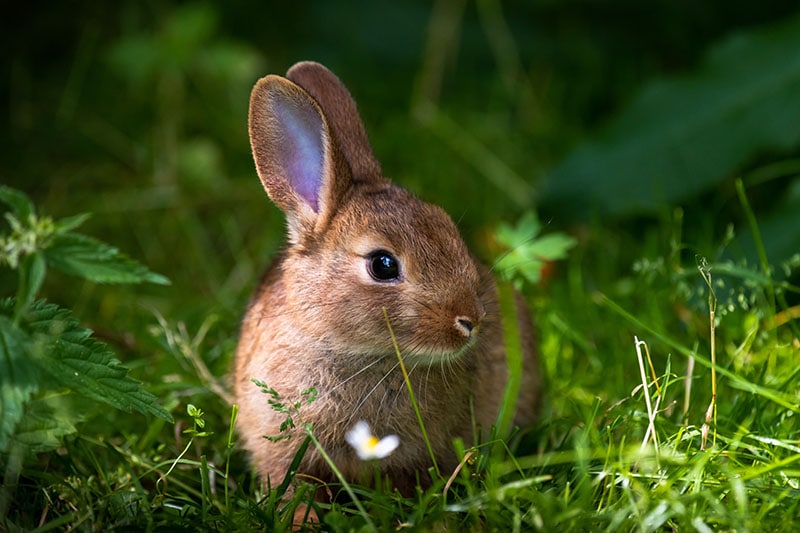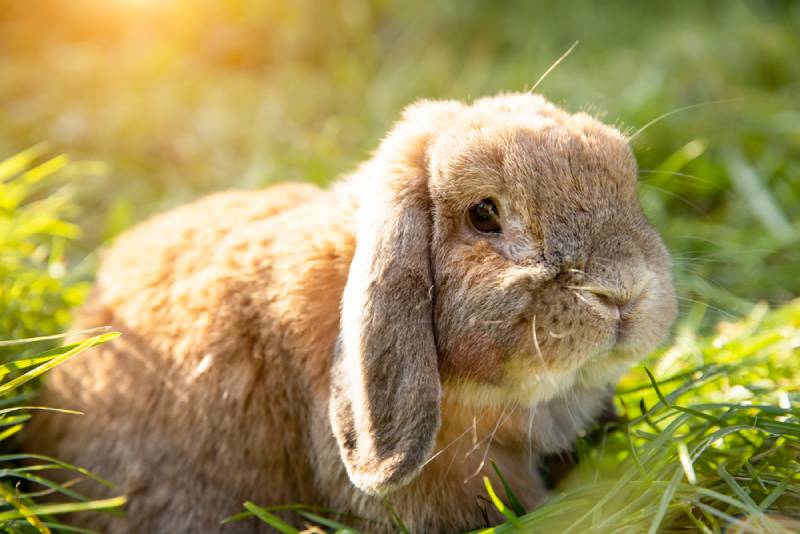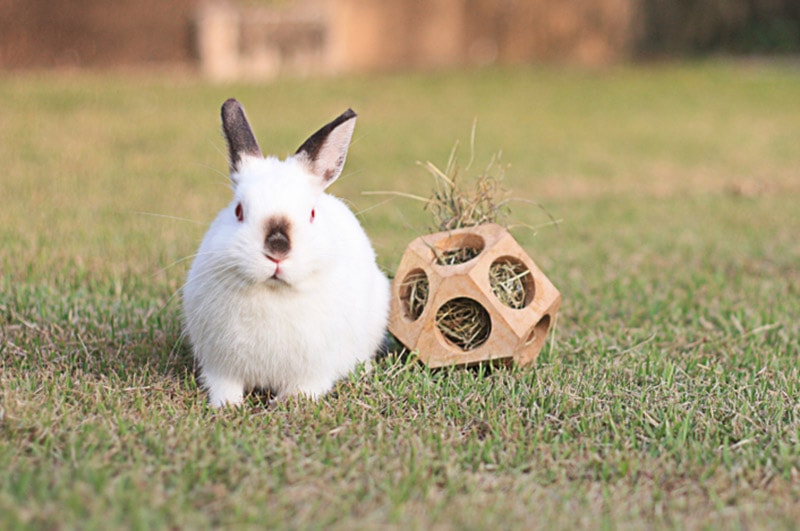Polish Rabbit Breed Info: Pictures, Temperament & Traits
By Grant Piper
Updated on

Click to Skip Ahead
Polish Rabbits are known for their diminutive size and friendly demeanor. They are adorable and instantly catch the eye of children and rabbit enthusiasts alike. But do Polish Rabbits make good pets? How do they behave? This comprehensive guide will cover everything you need to know about owning a Polish Rabbit so you can decide if this popular breed is right for you.
| Size: | Dwarf |
| Weight: | Up to 3.5 pounds |
| Lifespan: | 5–7 years |
| Similar Breeds: | The Netherland Dwarf |
| Suitable for: | Families; people interested in potentially showing rabbits |
| Temperament: | Docile, friendly, playful |
The Polish Rabbit is the perfect combination of appearance, temperament, and size. They are sharp looking rabbits that will appeal to families. They also have a rich history and a show pedigree. They can appeal to all sorts of people who are interested in rabbits, including pet owners and showers. The small size of the Polish Rabbit makes them easy to keep inside as they do not require a lot of food or space to maintain.
Polish Rabbit Breed Characteristics
How Much Do These Rabbits Cost
Polish Rabbits are a fairly common breed that is bred across the United States for various purposes. The estimated average cost of a Polish Rabbit is around $50. However, the price can vary depending on the rabbit’s pedigree, markings, and breeder. Some show rabbits can go for hundreds of dollars, while some poorly marked rabbits can be sold as pets for as little as $20.
The American Rabbit Breeders Association (ARBA) lists twelve officially sanctioned Polish Rabbit breeders in the United States. SmallPetsX lists eight official Polish Rabbit breeders on its own official page. It is possible to find a Polish Rabbit at a local pet store, but you might be better off looking for an official breeder for the best results and healthiest rabbit.
Temperament & Intelligence of the Polish Rabbit
Polish Rabbits have a very sweet temperament. They are rarely fearful (once they get used to their surroundings), and they are sweet, friendly, playful, and bright. This combination makes them very popular.
Polish Rabbits are not particularly intelligent, but they are trainable, like many breeds of rabbits. Many breeders and rabbit showers will attest that Polish Rabbits are easier to train than some other larger breeds of rabbits
Do These Rabbits Make Good Pets? 👪
Yes. Polish Rabbits make excellent pets. Their sweet and friendly nature will appeal to families and to people looking for a low-key companion. Their size makes them easy to care for. These rabbits don’t take up a lot of space and do not require a lot of food. There are very few downsides to keeping a Polish Rabbit as a pet. The only thing you might want to watch out for is that their small size makes these rabbits fragile. You might want to be careful with them around small children and other pets.
Does This Rabbit Get Along With Other Pets?
The Polish Rabbit will have no problem getting along with other pets. The question is, will your other pets get along with your Polish Rabbit? These rabbits are very small and will activate the predator centers of some animals’ brains. That means you should be careful keeping a Polish Rabbit around your cat or dog. The sight of a Polish Rabbit could cause these types of pets to play with or even hunt your rabbit, which can be fatal.
Polish Rabbits will have no trouble getting along with other rabbits or other rodents. If you are careful and have cats or dogs that do not show signs of predatory behavior, then your rabbit should be able to coexist with them as well, but the potential for an accident is something you need to be aware of.
Things to Know When Owning a Polish Rabbit:
Food & Diet Requirements 🥕
Polish Rabbits’ small size means that they do not need to eat as much as larger rabbits. It is recommended that you feed your Polish Rabbit a clump of hay the size of its body every single day. You should also be feeding your rabbit a bowl of fresh greens twice per day and supplementing one meal with nutrient-dense rabbit pellets. Every rabbit will eat a slightly different amount so you should tweak your feeding practices to ensure that you are not wasting too much food while ensuring that your rabbit is getting enough essential hay.
A Polish Rabbit needs a diet that consists of 70% hay. Hay is incredibly important to a rabbit’s digestive tract. Not feeding your rabbit enough hay can cause health issues like bloat, which can be fatal. Be sure to always keep hay in with your rabbit so it can eat its fill when it needs to.
Your rabbit will also need a supply of fresh water. Make sure to check your rabbit’s water at least once per day to ensure that it gets enough to drink.
Habitat & Hutch Requirements 🏠
| Minimum size: | 36×22×30 inches |
| Location: | Indoors |
| Covered space: | Yes |
| Rabbit run: | Recommended |
Polish Rabbits are small, so they do not need as much space as other rabbits. However, your hutch should be a minimum of 36×22×30 inches in size. You can give your Polish Rabbit a larger enclosure if you have the space. The more room your rabbit has, the more space it will have to move around and get its exercise.
It is recommended that you keep your Polish Rabbit indoors as opposed to outdoors. Their small size makes them an attractive target for predators, which will definitely test your hutch if you leave it outside. Polish Rabbits can also be sensitive to harsh weather and temperatures due to their small frame.
You should give your rabbit an enclosed area to hide and sleep in if it chooses. You should also keep an open area where the rabbit can hop around and explore.
Exercise & Sleeping Needs 🐇
Rabbits can be very active. Don’t let the diminutive size of the Polish Rabbit fool you, these rabbits can also be active. If you do not build a small rabbit run attached to your hutch, you should plan on taking your rabbit out and letting it explore your house. Rabbits in the wild can travel multiple miles per day, and rabbits like to be able to get out and move around. Be sure to provide your rabbit with time and space to move about as it pleases.
As discussed, you should provide your rabbit with an enclosed hutch or hide. This area will give the rabbit a safe and cozy place to sleep. Rabbits are crepuscular, meaning they like to be awake at dawn and dusk, so they will often be found sleeping in the afternoon and at night. If your bunny is hiding and snoozing the day away, don’t be surprised. This is normal behavior.
Training 🥎
Polish Rabbits are trainable, but they won’t be learning many tricks. Polish Rabbits can be trained to use a litter box which can be very helpful for indoor rabbit owners. They can also be trained to come when called and to respond to their name. Polish Rabbits are fairly bright and can be easily trained compared to some other breeds of rabbits.
But if you are used to training larger animals like cats, dogs, or horses, you might be frustrated by a rabbit’s limited training potential.
Grooming ✂️
Polish Rabbits need light yet consistent grooming. They have short coats, but their coats will shed during certain seasons. In the winter, your rabbit will fluff up, which can lead to excess fur coming off your rabbit. In the spring and summer, your rabbit will shed its thicker winter coat. You should brush it once per week during winter and summer and 2 to 3 times per week during autumn and spring. The additional brushing will help your rabbit remain clean and tidy during shedding seasons.
You should never bathe your rabbit. Rabbits can keep themselves clean with little input from you as an owner. Bathing a rabbit can be risky and cause injury if the rabbit panics.
Lifespan and Health Conditions 🏥
Polish Rabbits are a healthy breed that does not suffer from many major issues. They do have an average lifespan, so they won’t live much longer than the typical rabbit. However, if they do not run afoul of some rare health issues, they will not have any trouble living out their full life span with proper care.
- Malocclusion – misalignment of the teeth; feed plenty of hay
- Ear mites – those big ears can attract a tiny parasite called an ear mite; minor condition; treatable
- Flystrike – an infestation of fly maggots; fatal
- Bloat – potentially fatal GI condition as a result of an unbalanced or poor diet
- Injury – mishandling a small rabbit can cause serious back problems that can be fatal
Male vs. Female
There are very few differences between male and female Polish Rabbits in appearance or temperament. The maximum weight for any Polish Rabbit is just 3.5 pounds, so they all fall within the same size range. If you are planning on breeding your Polish Rabbits, you will need to be aware that they can breed very rapidly. Be sure to make a plan and keep your males and females separated when you are not actively trying to get a litter.
3 Little-Known Facts About Polish Rabbits
1. Polish Rabbits Began as Meat Rabbits
Today, Polish Rabbits are popular pets and show rabbits. They are kept for their size and their temperament. However, Polish Rabbits were first bred as meat rabbits. Over a hundred years ago, many people still ate rabbits. Rabbits were easy to breed and trap and provided edible meat. Few people continue that tradition today, but the meat pedigree of the Polish Rabbit persists. Despite their small size, people enjoyed the delectable taste of Polish Rabbits.
2. Polish Rabbits Are from England, Not Poland
The name Polish Rabbit makes people believe that they originate from Poland. But that is actually not the case. Polish Rabbits likely originated in England before migrating to the Netherlands and Belgium as a popular breed. The breed eventually made its way to the United States, where it was recognized by the American Rabbit Breeders Association in 1912. The Polish Rabbit has very little history or connection to the country of Poland
3. The Origin of the Polish Rabbit Is Murky
We know that the Polish Rabbit emerged in England in the middle part of the 19th century, but the exact origins are not known. Unlike other species, the first breeders of the Polish Rabbit are also unknown. There is speculation that the Polish Rabbit was a mash up of existing rabbit breeds, and it eventually led to the popular Netherlands Dwarf Rabbit, but the precise origins of the Polish Rabbit are not exact.
Final Thoughts
The Polish Rabbit is a very popular pet. It is adorable and easy to care for. They make perfect family pets and show rabbits. The Polish Rabbit has little connection to Poland and was initially bred as a meat rabbit in the 19th century. There is a lot to love about the Polish Rabbit. If you are looking to get a Polish Rabbit of your very own, check your local pet store. If you can’t find one locally, be sure to seek out a registered breeder for an official Polish Rabbit to call your own.
Featured Image Credit: Jne Valokuvaus, Shutterstock











